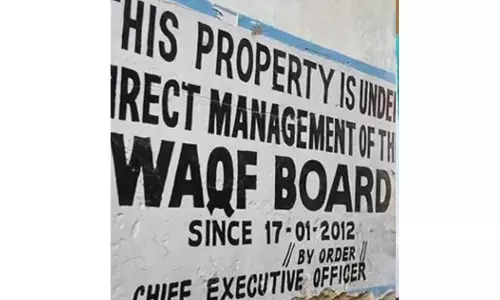
Deficient rainfall, lower sowing to push rice prices up
text_fieldsNew Delhi: Rice prices are expected to rise up due to deficient rainfall in foodgrain-producing states which consequently led to lower crop output, said Motilal Oswal Financial Services in a report.
The rising global rice prices would further push local prices up, adding that rice constitutes around 4.4 percent of the overall Consumer Price Index (CPI) basket, the report added.
A deficient monsoon in major rice-producing states (with 49 percent share), such as West Bengal (11 percent below normal), Uttar Pradesh (2 percent), Andhra Pradesh (22 percent), Odisha (25 percent), Telangana (35 percent), Chattisgarh (12 percent), Bihar (29 percent) and Assam (2 percent), has affected rice sowing, the report said.
However, states with higher irrigation cover, such as Uttar Pradesh, Andhra Pradesh, and Telangana, will be less impacted.
Apart from the northwest region, at 59 percent above normal, and central India at 4 percent above normal, all other regions have witnessed below-normal rainfall, Motilal Oswal Financial Services said in the report.
Cumulative rainfall until July 9 was 2 percent above normal compared with an 8 percent deficit as of July 1 and 3 percent above normal last year. However, the distribution of rainfall remains uneven.
The rainfall deficit in the southern peninsula has reduced from 45 percent below normal last week to 23 percent below normal now. The eastern and northeastern regions have witnessed a deficit of 17 percent, the report said.
The report pointed out that July is a crucial period for sowing kharif crops as about 32 percent of monsoon precipitation typically occurs during this month.
Kharif sowing as of July 7 stood at 8.7 percent lower than last year. This is mainly due to the lower sowing of rice and pulses. The area under paddy cultivation is still 23.9 percent lower than last year. The area under pulses is 25.8 percent lower than last year, the report said.
Production of oilseeds, jute, and cotton is also lower.
On the other hand, coarse cereals (19.7 percent YoY) and sugarcane (4.7 percent YoY) are doing well.
As of July 7, water reservoir levels stood at 29 percent of the live storage capacity, the lowest in four years, mainly due to lower storage in the southern region of the country.
According to the India Meteorological Department (IMD), July rainfall is likely to be on the upper side of the "normal" range, which is 94-106 percent of the long-period average (LPA).
The IMD further mentioned that El Nino conditions are likely to develop by the end of July, but they could be offset by the development of a positive Indian Ocean Dipole (IOD).
The IMD has indicated that certain regions of Uttar Pradesh, Bihar, Assam, Punjab, Karnataka, and Tamil Nadu may witness "below normal" rainfall in July. It could affect the sowing of paddy and pulses in these states, the report said.
Although irrigation facilities have improved in the past two decades, key kharif crops, such as paddy, tur, and groundnut, still heavily rely on rainfall.
With inputs from IANS























